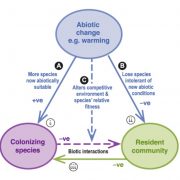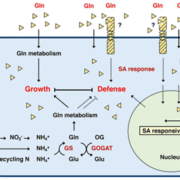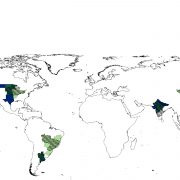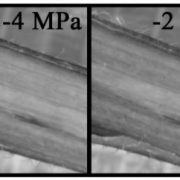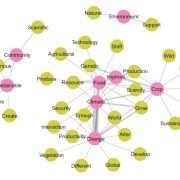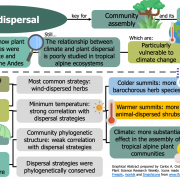Physcomitrium patens responses to elevated CO2 and nitrogen
 With atmospheric CO2 levels increasing 100 times faster than historical levels, much attention has been paid to how crop plants respond to this elevated CO2 (eCO2). For angiosperms, eCO2 leads to increased CO2 assimilation and decreased photorespiration, but over time plants can adapt, leading to lower stomatal conductivity, and ultimately lower rates of nitrogen assimilation. Although not significant food sources for humans, mosses are important carbon sinks and critical components of many ecosystems, yet their responses to eCO2 have not been examined in detail. Here, Mohanasundaram et al. explored how the model moss Physcomitrium patens responds to eCO2. The authors measured growth rates and growth patterns and quantified key metabolites. They noted faster growth and life cycle progression under eCO2, with similar effects upon glucose treatment; these are likely responses to enhanced sugar signaling. The growth patterns were also impacted by the availability of nitrogen in the growth medium; for example, elevated nitrogen preferentially promoted growth in photosynthetic tissues. These findings demonstrate coherent moss responses to changes in exogenous CO2 and nitrogen levels, which can be useful for future ecosystem and climate models. (Summary by Mary Williams @PlantTeaching) New Phytol. 10.1111/nph.19348
With atmospheric CO2 levels increasing 100 times faster than historical levels, much attention has been paid to how crop plants respond to this elevated CO2 (eCO2). For angiosperms, eCO2 leads to increased CO2 assimilation and decreased photorespiration, but over time plants can adapt, leading to lower stomatal conductivity, and ultimately lower rates of nitrogen assimilation. Although not significant food sources for humans, mosses are important carbon sinks and critical components of many ecosystems, yet their responses to eCO2 have not been examined in detail. Here, Mohanasundaram et al. explored how the model moss Physcomitrium patens responds to eCO2. The authors measured growth rates and growth patterns and quantified key metabolites. They noted faster growth and life cycle progression under eCO2, with similar effects upon glucose treatment; these are likely responses to enhanced sugar signaling. The growth patterns were also impacted by the availability of nitrogen in the growth medium; for example, elevated nitrogen preferentially promoted growth in photosynthetic tissues. These findings demonstrate coherent moss responses to changes in exogenous CO2 and nitrogen levels, which can be useful for future ecosystem and climate models. (Summary by Mary Williams @PlantTeaching) New Phytol. 10.1111/nph.19348


